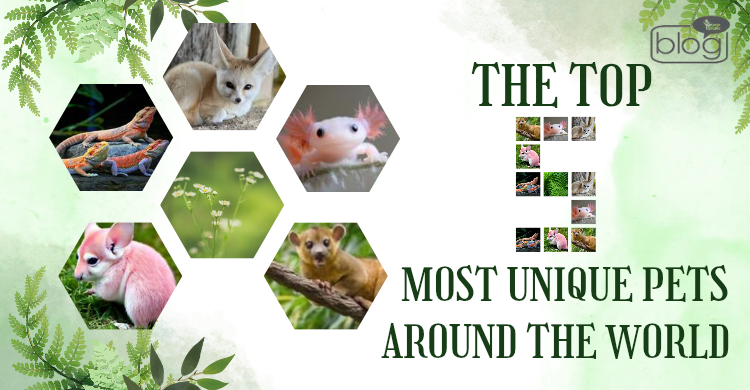When we consider pets, most people think of the common cats, dogs, and fish. Still, people have chosen far more exotic friends in many different parts of the globe. While some of these unusual animals are clearly illegal due to conservation issues, others are legally owned with appropriate permits.
Let’s explore five extraordinary and uncommon pets that continue to fascinate pet lovers around the globe.
- Fennec Fox (Vulpes zerda)
The fennec fox, known for its large ears, is a tiny nocturnal animal that naturally inhabits the Sahara Desert. It is known for its enormous ears, which help dissipate heat and offer sharp hearing. Most owners find them to be difficult pets since they are incredibly energetic and require specialized care.
Where’s popular? Fennec foxes are commonly kept as exotic pets in the United States, Japan, and parts of Europe.
Legal in some U.S. states with permits, they are illegal in others because of wildlife concerns. To help wild populations, some European nations also forbid ownership.
- Axolotl (Ambystoma mexicanum)
The axolotl stands out among amphibians for its rare ability to regenerate lost limbs. Axolotls live their entire lives in their aquatic larval form, in contrast to the majority of salamanders. These fascinating animals come in various colors –such as golden, black, and albino and are known for their soft, feathery gills that give them a distinct look. As aquarium pets, axolotls are especially well-liked in Australia, the US, and Japan.
Due to environmental concerns, they are prohibited in California and New Jersey in the United States, despite being legal in many other countries. Conservation efforts are essential because they are critically endangered in the wild in Mexico, where they are native.
- Kinkajou (Potos flavus)
Next, meet the kinkajou, often called the “Honey Bear.” Though it’s related to raccoons, this rainforest dweller has some unique features – like a long, flexible tail, sharp claws, and a tongue designed to sip nectar straight from flowers. With a long, curling tongue, agile claws, and a tail that can grip like an extra limb, it’s well-equipped to reach deep into flowers to sip sweet nectar. Because they are very active, kinkajous require plenty of space and enrichment.
In the US and some Latin American nations, they are frequently kept as exotic pets.
Because of their wild nature and potential for zoonotic diseases, kinkajous are prohibited in some U.S. states but permitted in others. They are protected in many parts of their native South American rainforest habitat.
- Chinchilla(Chinchilla chinchilla & Chinchilla lanigera)
Chinchillas are soft-furred, night-active rodents originally from the Andes Mountains of South America. They are known for having extremely dense and soft fur that needs to be cleaned frequently with dust baths. Chinchillas are social and highly active, making them entertaining pets.
They are popular as pets in the United States, the United Kingdom, and parts of Europe.
Chinchillas are legal in most countries, but some states and regions require permits due to concerns about their potential to become invasive if released into the wild.
- Bearded Dragon (Pogona species)
Bearded dragons are medium-sized reptiles native to Australia. When threatened, they swell out their characteristic spiky beard. Bearded dragons are docile, easy to handle, and relatively low-maintenance compared to other exotic reptiles.
Popular to where? They are especially popular as pets in the United States, Canada, and the United Kingdom.
Most countries allow bearded dragons, but some prohibit their importation to preserve domestic wildlife. To stop illicit trade, the home country of Australia prohibits its exports.
Although having a unique pet can be a fulfilling experience, there are a lot of responsibilities involved. The legal status of exotic pets differs from nation to nation, and many of them need special care. Researching laws, ethical issues, and the welfare of the animal is crucial before thinking about getting a unique pet. Some of these animals can survive in captivity, but others are better off in the wild, where they can support their native ecosystems.
To read more blogs like this, click here.
Writer
Fatemi Sushom
Intern, Content Writing Department
YSSE

